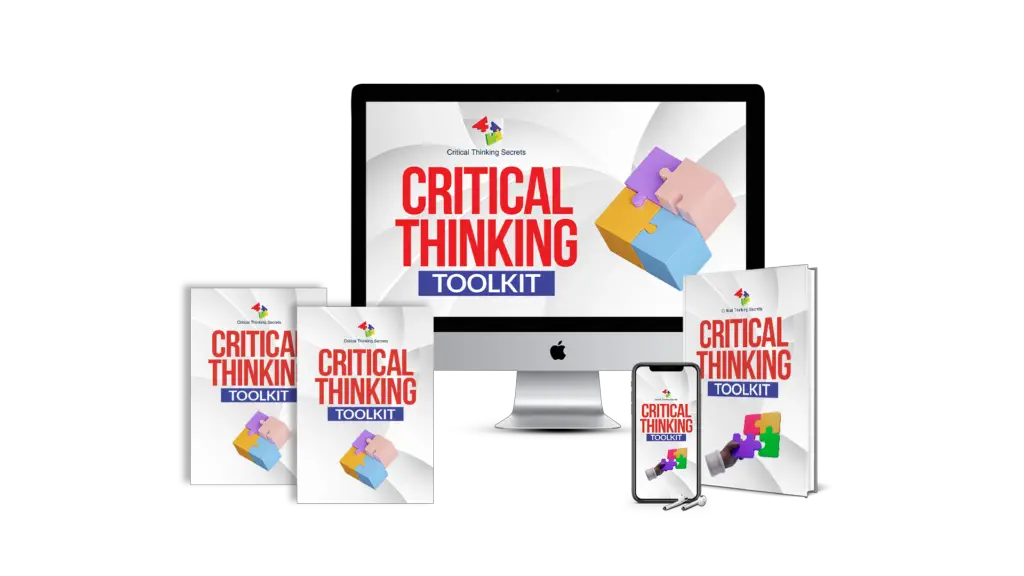Critical thinking can help to better navigate the information-dense and complex world we live in. By thinking critically we can better identify priorities, take a sensible approach to problem-solving and reach conclusions logically in line with evidence. Puzzles are an excellent way both to learn and practice critical thinking skills.
If you’d like to learn more about critical thinking or simply practice your skills with some puzzles, then this is the article for you. Read a little bit more about critical thinking skills and how to apply them first, or just skip straight to the puzzles and see how you get on.
Have fun!
What is critical thinking?
Critical thinking is a broad approach to problem solving and analysis based on logic and evidence. It brings together a wide range of intellectual competences and the ability to combine and cross-reference them. Some of the most important elements of a critical thinking approach include:
Analytical skills:
- understanding of questions and concepts
- differentiation of relevant / irrelevant evidence and information
- identification of similarities, connections and differences
- use of metaphors or analogies to communicate ideas
Powers of inference:
- extraction of meaning from data using inductive or deductive reasoning
- extrapolation of data or abstraction into concepts and patterns
- correct identification and deployment of analogies and assumptions
- grasp of causal relationships, allowing development of conclusions and theories.
Data and theory evaluation:
- assessment of how strong, important or credible a theory might be
- taking on board new data and new arguments which alter understanding of ideas and theory
Rational decision-making:
– application of all the skills and competences above in order to come to a rational conclusion.
Problem-solving attitude: In addition to being able to think critically, you must also be personally inclined to think critically when facing a difficult or complex challenge. Developing qualities including curiosity and fairness, while distancing yourself from ideologies and group-think, should all help to create the kind of psychological landscape where critical thinking can flourish.
How can I learn critical thinking?
Critical thinking skills are hard to develop from only reading books or listening to lectures. The most effective way to sharpen and deepen critical thinking faculties is to practice critical thinking. Critical thinking puzzles offer a fun way to learn and the eight critical thinking puzzles we’ve chosen for this article should help you make a good start.
Critical Thinking Toolkit
This comprehensive toolkit is designed to help you:
– Break free from cognitive traps.
– Approach problems systematically and strategically.
– Make decisions with clarity and confidence.
Packed with ebooks, audiobooks, practical guides, interactive checklists, and fun quizzes
Eight critical thinking puzzles – with answers
Puzzle 1 – Letter puzzles
What common feature do the following words share?
Antimony
Elephant
Intensity
Oranges
Underwater
Answer: All of these words begin with a vowel. This type of puzzle may send your mind off in the wrong direction, thinking about the objects or concepts described by the words, and the properties they might share. In fact, the solution lies in a far more simple consideration of the alphabet. Puzzle 1 is a simple example of a common type of letter or word puzzle.
Puzzle 2 – Commonalities and differences
What do the following items have in common and which is the odd one out?
Milk
Water
Coffee
Orange Juice
Petrol
Answer: These items are all liquids and the odd one out is petrol, since all the others are drinkable liquids.
Puzzle 3 – Falling on his feet
A man who lives in a high-rise building decides to exit through the window one morning rather than using the door. Somehow he survives the fall without a scratch and walks away to work. How did this happen?
Answer: The man lived on the ground or first floor and merely stepped or jumped down to the pavement outside. By stating early on that the building in question was a high-rise building, it’s easy for someone reading quickly to assume that the man jumped from a window on a high store but this it s not necessarily the case.
Puzzle 4 – Walk this way
A group of five people enter a windowless meeting room together. An hour later when the meeting ends, four walk out of the door, leaving the room empty. What has happened to the fifth member of the group?
Answer: The fifth person was in a wheelchair and wheeled out of the room rather than walked. Solving this puzzle requires you to think laterally about the question and the possible solutions. The answer can be found by asking yourself whether the emphasis of the question is on the emptiness of the room or the means by which the other four people left.
Puzzle 5 – Shapes and symbols
When lying on my side, I am everything, but when cut in half, I am nothing. What am I?
Answer: The number 8. This puzzle requires that you think about a shape being repositioned or cut in a way that can change it to “everything” or “nothing”. Number 8 on its side is the mathematical symbol for infinity (i.e. everything) and also shaped like two small number 0s put together.
Puzzle 6 – Three hard options
The hero is escaping the lair of an evil super-villain and is faced with three possible exits:
- Door A leads into a pit of bubbling lava
- Door B leads to a room housing a deadly hitman
- Door C leads to the den full of lions that haven’t had a meal for a year.
Which door should the hero choose?
Answer: Door C. If the lion hasn’t eaten in a year, it will definitely be dead by now. This type of puzzle requires you to consider the full implications of the information given, rather than being drawn into a comparison of the relative dangers of lava, hitmen and lions…
Puzzle 7 – The bus driver’s eyes
You are a bus driver. Today the bus is empty at the start of your route but at the first stop, four people get onto the bus. Eight people get on at the second stop, while three alight. When the bus reaches the third stop, one more gets off, and three get on.
At the fourth stop, two people get off the bus and one gets on. The bus is traveling at an average speed of 30mph and its tires are new. What color are the bus driver’s eyes?
Answer: You are the bus driver so the color will be the color of your own eyes. This type of puzzle tries to confuse you and obscure the single piece of relevant information by presenting large quantities of irrelevant information.
Puzzle 8 – Losing weight
A man walks into a room, closes the doors behind him and presses a button. In a matter of seconds the man is 20lb lighter. Despite this, he leaves the room at the same weight he entered it.
Answer: The room in question is actually an elevator. When the man gets in and presses the button, the elevator moves downwards with an acceleration that reduces the effect of gravity and makes the man temporarily 20lb lighter. Once the lift stops moving, the man’s weight is subject to normal gravity, just the same as before. Solving this puzzle requires a small piece of general physics knowledge.
A final word…
We hope you’ve enjoyed our critical thinking puzzles for adults and that your critical thinking skills are feeling refreshed and sharpened after reading our article. Whether at school, in the workplace, or in general life, critical thinking can be a valuable tool for success and anyone can learn to use it.
Get more critical thinking puzzles on our Youtube channel:






